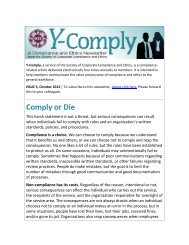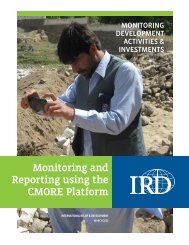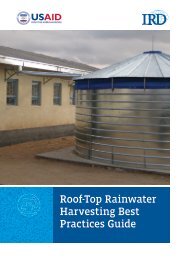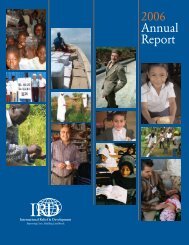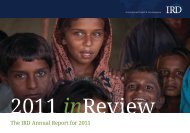Empowering citizens Engaging governments Rebuilding communities
Empowering citizens Engaging governments Rebuilding communities
Empowering citizens Engaging governments Rebuilding communities
Create successful ePaper yourself
Turn your PDF publications into a flip-book with our unique Google optimized e-Paper software.
“The ultimate goal was to engage people for two or three<br />
years, but in many cases, we made a successful transition to<br />
keep activities going on. And that was evident across all the<br />
program components. CSP created jobs. CSP engaged youth.<br />
But at the local level, it really achieved something special.”<br />
— Barzan Ismaeel<br />
CSP was originally known as the “Focused Stabilization<br />
in Strategic Cities” program, which was descriptive<br />
of the COIN philosophy of quick-impact relief and<br />
reconstruction with short, targeted missions. Unlike<br />
traditional development programs, CSP was fluid,<br />
scaling up or down in response to evolving priorities<br />
in the most insecure areas of key cities like Basra,<br />
Kirkuk, and Mosul. But as CSP evolved from concept<br />
to implementation, “focused stabilization” began to<br />
mean more than geography. IRD’s broader mission<br />
of trying to establish a wholly integrated stabilization<br />
program with discernible short- and long-term benefits<br />
led to a system of “checks and balances.” Individual<br />
program components were afforded flexibility to meet<br />
their goals, but they also maintained a focus on adherence<br />
to the complete package model. As CSP rapidly<br />
scaled up, this tightly integrated approach proved<br />
important.<br />
The initial cooperative agreement was for $265 million<br />
and six months of activities in Baghdad. Expansion<br />
was expected, but funding increased rapidly in<br />
response to Department of Defense and USAID needs<br />
to add cities to the program. These changes eventually<br />
pushed the total obligation to $644 million. At<br />
the height of the program, CSP had 1,800 staff and<br />
was spending an average of $21 million a month.<br />
Program operations easily could have spiraled out of<br />
control, but the overall design didn’t allow it. “When<br />
we started expanding to other cities, the initial processes<br />
and procedures were taken to those cities,”<br />
Michele Lemmon said. “But they had to be adapted,<br />
because each city had its own circumstances, different<br />
<strong>communities</strong>, and a different acceptance of the<br />
program. Remember, we were doing what the Iraqis<br />
wanted to do. All the programs were designed by the<br />
Iraqi staff, with a helping hand from us. Now, consider<br />
going from one city, Baghdad, to 15 cities in a matter<br />
of months. That’s how large we became. Really, the<br />
success we had in those circumstances is owed to the<br />
strong program design. It kept CSP focused almost by<br />
default.”<br />
Community infrastructure and essential<br />
services: CSP’s entry point<br />
CSP categorized employment as either short term<br />
(fewer than three months) or long term (more than<br />
three months). By traditional labor standards in a<br />
modernized country’s economy, three months would<br />
hardly seem long term. In an environment like Iraq,<br />
however, that measure helped differentiate between<br />
jobs created by traditional development tools such as<br />
35



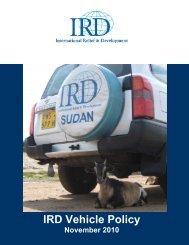
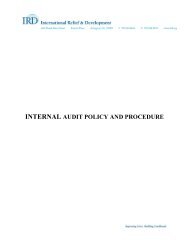
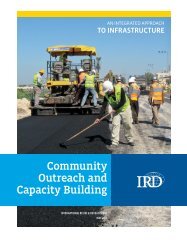
![Guide bonne pratique production d'oignon qualité_VF_4_2411012[1]](https://img.yumpu.com/23506639/1/184x260/guide-bonne-pratique-production-doignon-qualitac-vf-4-24110121.jpg?quality=85)

